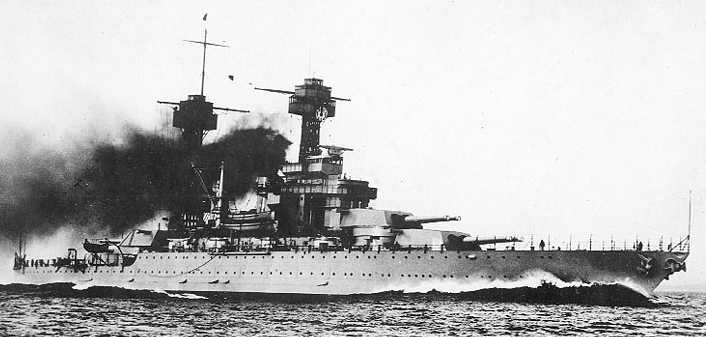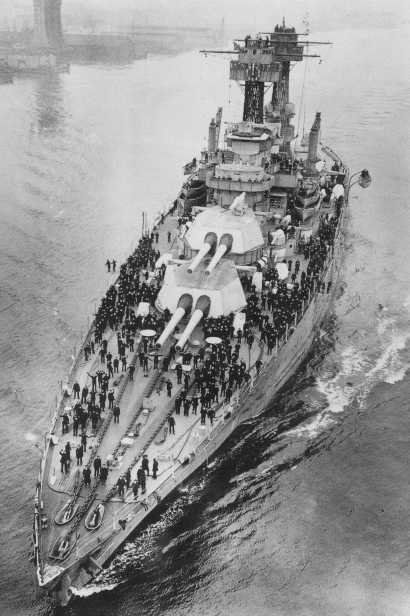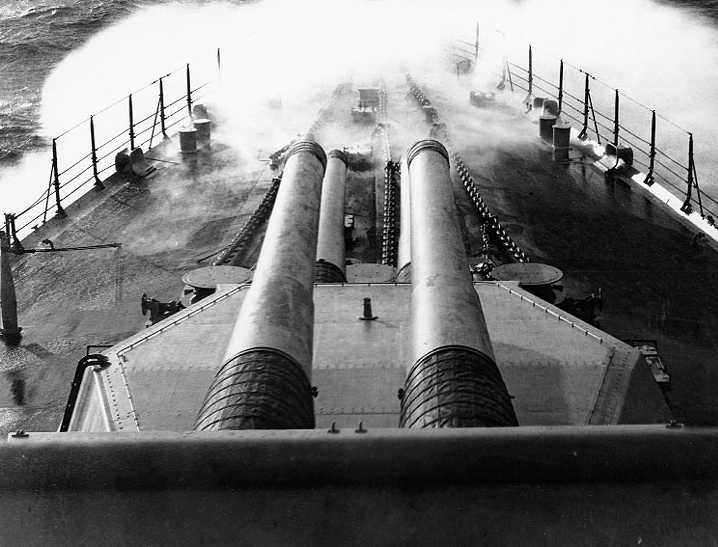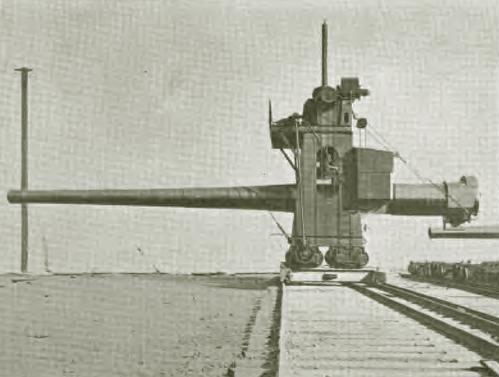|
Consisted of A tube, jacket, liner, seven hoops, four locking rings and a screw-box liner. A total of about 40 guns were manufactured. In the 1930s, these guns were rebuilt and then redesignated as 16"/45 (40.6 cm) Mark 5 and Mark 8. Nomenclature note: The 16" (40.6 cm) Mark A was the ballistic prototype of all 16" (40.6 cm) guns. This prototype was developed from a 13" (33 cm) Mark 2 bored out and relined for the larger projectiles. Some data and a photograph of this gun may be found on the 13"/35 (33 cm) pictures page. |

USS Colorado BB-45 running trials in 1923
|

USS Maryland BB-46 approaching the New
York Navy Yard in the 1920s
|

USS Colorado BB-45 in the 1920s
|

16"/45 (40.6 cm) Mark 1 gun on transport crane at Dahlgren Proving Grounds during World War I |